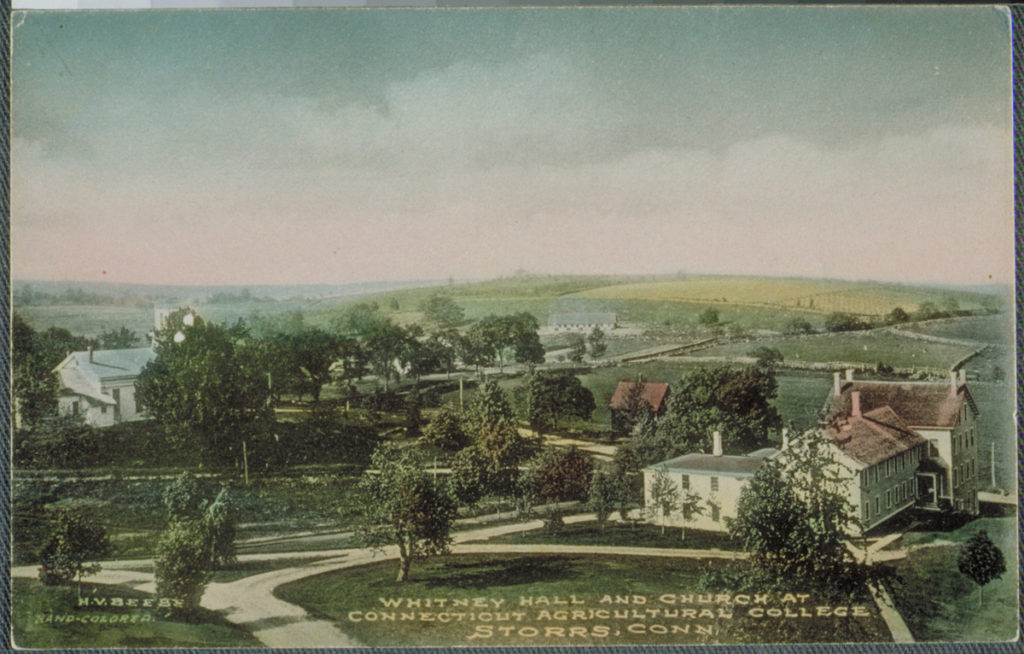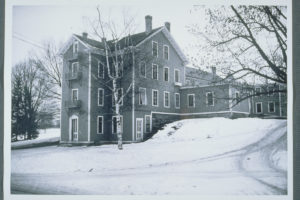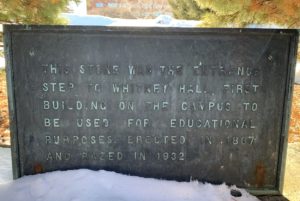By Michael Rodriguez
In 1866, the Connecticut Soldiers’ Orphans’ Home opened in Mansfield. The state legislature chartered the orphanage in response to an appeal by Theodore Sedgwick Gold, a leading light of 19th-century Connecticut agriculture. Edwin Whitney provided the buildings and land. Over nine years, the orphanage housed and educated at least 150 boys and girls left parentless by the Civil War. Closed in 1875 and sold soon after, the former orphanage became the site of Storrs Agricultural School (now the University of Connecticut) in 1881. According to university historian Walter Stemmons, had the orphanage never existed, “it is not at all unlikely that there never would have been a Storrs Agricultural School”—and UConn as we know it might not exist today.
Striking Gold
T. S. Gold (1818–1906) was the driver behind the Connecticut Soldiers’ Orphans’ Home. Gold and his father established Cream Hill Agricultural School in Cornwall in 1845. “From that date to his death in 1906,” Stemmons observed, “there seems to have been no movement in Connecticut that could be classified as rural, agricultural, or public welfare, in which T. S. Gold did not protrude his spare and angular frame with beneficial results.” In February 1864, Gold published an appeal to the state’s legislators and philanthropists to establish an orphanage for the children of Union soldiers, to care for them until they reached the age of 14. In May 1864, the state chartered the Connecticut Soldiers’ Orphans’ Home. A twenty-acre site on Prospect Hill in Cornwall (Gold’s hometown) was selected, but then Edwin Whitney stepped up.
Edwin Whitney (1829–1867) was a schoolteacher who bought his father-in-law’s Mansfield farm in 1865 and converted the property into a boarding school for boys. Arson destroyed the school in November. Whitney quickly rebuilt, erecting a rambling four-story building—the future Whitney Hall. On September 24, 1866, he donated his school and fifty-acre farm, valued at $12-15,000, for the exclusive purpose of caring for “the orphan or destitute children of Connecticut soldiers, and other citizens of the state.” The Connecticut Soldiers’ Orphans’ Home opened in October 1866. Whitney became the home’s superintendent; his wife Minerva was its matron. Gold served as secretary of the home’s board of trustees throughout the nine years of the orphanage’s existence.
A Home for Orphans
Despite its founder’s untimely death in August 1867, the Connecticut Soldiers’ Orphans’ Home flourished under the guidance of Whitney’s successor as superintendent, John B. Carpenter, a local magistrate. The home housed orphans from all over Connecticut and attracted generous private donations of cash and supplies to supplement its annual state appropriation. By April 1869, 101 children had passed through the home; by May 1872, the tally had risen to 132. But, slowly, the Civil War orphans began attaining the age when they were no longer eligible for the state’s support, and in 1874, a mere eight residents remained. The home closed in May 1875. Over nine years, the orphanage had housed and educated 150 children, with a peak of approximately fifty residents at once.
When the home closed, the property reverted to the ownership of Minerva Whitney. Her husband’s deed of gift required the home’s trustees to pay the Town of Mansfield the property’s “market value,” to fund religious training for townsfolk. The town rejected this stipulation, however, and filed a quitclaim deed in May 1876, allowing trustees to “sell” the property to Minerva for $1. In March 1878, she sold the property to wealthy local farmer Augustus Storrs for $5,000. Storrs and his brother Charles, who had induced Whitney to start his Mansfield boarding school in the first place, deeded the old orphanage to the state in 1881, establishing the Storrs Agricultural School (UConn).
Legacy Left at UConn
Long after 1881, Gold and the Whitney family remained a strong presence at Storrs Agricultural School. Gold served as a school trustee and board secretary from 1881 to 1901. UConn named its first dormitory Gold Hall in his honor (it burned down in 1914). Edwin and Minerva’s daughter Edwina (1868–1970) served as UConn’s librarian from 1900 to 1934. A women’s residence hall was named in her honor in 1938. The former orphanage became Edwin Whitney Hall. The first major building on campus, “Old Whitney” housed classrooms, offices, and living quarters before its demolition in 1932. A plaque marks the site of the Connecticut Soldiers’ Orphans’ Home, on the corner of Route 195 and North Eagleville Road, in the heart of UConn’s campus.
Michael Rodriguez is Collections Strategist at the University of Connecticut Library and has contributed more than sixty articles on Connecticut history to Wikipedia.












